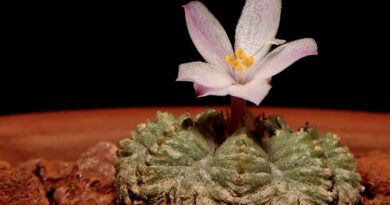20 Medicinal Health Benefits of Entada rheedii (African Dream Bean)
Entada rheedii, commonly known as African Dream Bean or Snuff Box Sea Bean, is a fascinating woody climber that belongs to the family Fabaceae. This plant exhibits unique characteristics that make it stand out in the botanical world. Let’s take a closer look at the botanical features of Entada rheedii:
Entada rheedii is a robust and vigorous climbing plant that can reach considerable heights. It often scrambles over trees and other vegetation, using its strong tendrils to anchor itself.
The leaves of Entada rheedii are alternate, pinnately compound, and relatively large. Each leaf comprises numerous leaflets arranged in pairs along a central axis. These leaflets are elliptical in shape and possess a glossy green surface.
The flowers of Entada rheedii are small and inconspicuous, arranged in elongated clusters known as racemes. They have a typical pea-like appearance, characteristic of plants in the Fabaceae family.
One of the most distinctive features of Entada rheedii is its large, flattened seed pods. These pods can grow to impressive lengths, often exceeding half a meter. They are woody and can vary in color from green to brown as they mature.
The pods are also known as “Sea Beans” due to their ability to float and be carried by ocean currents to distant shores.
Within the large seed pods, Entada rheedii produces seeds that are often referred to as “African Dream Seeds.” These seeds are somewhat flat, oval-shaped, and can reach significant sizes. They have a hard outer coat that protects the embryonic plant inside.
Entada rheedii is native to various regions across Africa, including tropical and subtropical areas. It thrives in diverse habitats, including coastal areas, savannas, and forests.
The plant’s ability to climb and scramble over other vegetation allows it to access sunlight and grow in areas with varying degrees of shade.
Entada rheedii holds cultural and traditional significance in many African societies. Its large seeds are often used in rituals, ceremonies, and spiritual practices.
The plant’s association with enhancing dreams and facilitating communication with the spirit world has contributed to its revered status in various cultures.
While not currently listed as endangered, Entada rheedii’s habitats are subject to various environmental pressures. Deforestation, habitat loss, and overharvesting of its distinctive seeds could potentially impact its populations in the future.
Read Also: 15 Medicinal Health Benefits of Cussonia spicata (Wild Cabbage Tree)
The Medicinal Health Benefits of Entada rheedii (African Dream Bean)

1. Enhanced Dream Activity: One of the most well-known properties of Entada rheedii is its ability to enhance dream experiences. Consuming a small amount of the seeds before sleep is believed to promote vivid and memorable dreams, fostering a connection between the conscious and subconscious mind.
2. Spiritual Insights: In various cultures, Entada rheedii is used to facilitate spiritual insights and visions during dream states, aiding individuals in connecting with their inner selves and the spiritual realm.
3. Sleep Disorder Relief: Entada rheedii is also utilized to address sleep disorders such as insomnia. Its calming properties may help promote restful sleep and alleviate sleep-related challenges.
4. Anxiety Reduction: The plant’s potential to reduce anxiety and stress is valued in traditional practices, offering a natural approach to managing these common emotional concerns.
5. Lucid Dreaming Support: For those interested in lucid dreaming—where one becomes aware of and can influence their dreams—Entada rheedii is often sought to enhance the frequency and depth of lucid dream experiences.
6. Cognitive Enhancement: Some traditional beliefs suggest that Entada rheedii might support cognitive function, including memory enhancement and improved focus.
7. Spiritual Cleansing: The smoke produced by burning Entada rheedii seeds is employed for spiritual cleansing, purifying the environment and preparing for rituals and ceremonies.
8. Ritualistic Importance: Across various cultures, the seeds play a pivotal role in rituals, serving as a conduit for communication with ancestors and spiritual entities.
9. Traditional Medicine: Entada rheedii is integrated into traditional medicinal practices to address various ailments, including fever and infections, showcasing its versatility as a remedy.
10. Pain Alleviation: The plant’s extracts are believed to possess pain-relieving properties, providing relief from discomfort associated with different conditions.
11. Anti-Inflammatory Effects: Entada rheedii may exhibit anti-inflammatory properties, potentially aiding in managing inflammatory ailments.
12. Digestive Support: Traditional medicine systems incorporate different parts of the plant to address digestive concerns and promote overall gut health.
13. Respiratory Relief: Preparations of Entada rheedii may offer respiratory benefits, helping to alleviate breathing difficulties and related discomforts.
14. Circulatory Health: The plant might contribute to maintaining healthy blood circulation, which is crucial for overall well-being.
15. Skin Nourishment: Extracts from Entada rheedii can be applied topically to promote skin health and manage certain skin conditions.
16. Wound Healing: Traditional applications of the plant’s components may aid in wound healing due to its potential regenerative properties.
17. Anti-Parasitic Potential: In some cultures, Entada rheedii is used to address parasitic infections, harnessing its potential anti-parasitic effects.
18. Menstrual Comfort: Among women’s health applications, the plant is used to alleviate menstrual discomfort and support reproductive well-being.
19. Anti-Fungal Properties: Entada rheedii extracts might exhibit anti-fungal activity, making them useful for addressing fungal infections.
20. Potential for Diabetes Management: Although further research is needed, there are indications that Entada rheedii could play a role in managing diabetes.
Read Also: 9 Medicinal Health Benefits of Bosch’s Pitcher-plan (Nepenthes Boschiana)
The Methods of Usage to Achieve the Provided Health Benefits of Entada rheedii (African Dream Bean)
1. Dream Enhancement: To enhance dream activity and promote vivid dreams, consider consuming a small amount of Entada rheedii seeds before sleep. The seeds can be chewed, crushed, or brewed into a tea.
2. Topical Applications: For skin-related benefits, prepare extracts or ointments using different parts of Entada rheedii, such as leaves or seeds. These can be applied topically to address skin issues or promote overall skin health.
3. Inhalation: Burn the seeds of Entada rheedii to create a fragrant smoke. Inhaling the smoke during meditation, rituals, or relaxation practices may offer spiritual insights and respiratory benefits.
4. Infusions and Decoctions: Utilize various plant parts to prepare infusions or decoctions for internal consumption. Boil leaves, seeds, or other components in water to create a potent liquid that can be consumed as a tea.
5.Powdered Form: Grind the seeds of Entada rheedii into a fine powder. This powder can be ingested directly, added to beverages, or incorporated into other herbal preparations.
6. Dream Sachets: Create sachets using dried Entada rheedii seeds and place them under your pillow before sleep. This method is believed to enhance dream experiences and promote positive energy.
7. Spiritual Rituals: Burn Entada rheedii seeds as incense during spiritual rituals or ceremonies. The aromatic smoke is thought to cleanse the environment and enhance the connection with the spiritual realm.
8. Medicinal Infusions: Brew seeds or other plant parts into a medicinal infusion. This method allows you to access the plant’s potential health benefits in a gentle and nurturing way.
9. Oil Infusion: Prepare an infused oil using Entada rheedii seeds and a carrier oil like coconut or olive oil. The infused oil can be used for massages or applied topically for various purposes.
10. Steam Inhalation: Add Entada rheedii leaves or seeds to a bowl of hot water and inhale the steam to potentially address respiratory concerns.
11. Bath Additive: Infuse Entada rheedii leaves or seeds into your bath water for a relaxing and potentially therapeutic bathing experience.
12. Herbal Combinations: Combine Entada rheedii with other complementary herbs to create customized blends that address specific health concerns.
The Side Effects of Using Entada rheedii Medicinal Plant
1. Gastrointestinal Discomfort: In some cases, excessive consumption of Entada rheedii seeds or preparations may lead to gastrointestinal discomfort, including nausea, vomiting, or digestive upset.
2. Headaches: Overconsumption or improper usage of Entada rheedii could potentially lead to headaches or migraines in sensitive individuals.
3. Heightened Dream Activity: While many seek enhanced dream experiences, excessive use of Entada rheedii seeds before sleep might lead to an overwhelming influx of dreams, potentially affecting sleep quality.
4. Sleep Disruption: In some instances, the plant’s dream-enhancing properties could disrupt regular sleep patterns, leading to restless nights or daytime drowsiness.
5. Allergic Reactions: Individuals with known allergies to plants in the Fabaceae family (pea family) might be at risk of allergic reactions when using Entada rheedii.
6. Interactions with Medications: If you are taking medications, especially sedatives, antidepressants, or other medications that affect the central nervous system, consult a healthcare professional before using Entada rheedii. It could interact with these medications and alter their effects.
7. Psychological Effects: The plant’s dream-enhancing properties may lead to intense dream experiences, which could be emotionally overwhelming for some individuals.
8. Lack of Standardization: Herbal preparations may vary in potency and quality. Without standardized dosages, it’s challenging to predict the exact effects of using Entada rheedii.
9. Pregnancy and Breastfeeding: Pregnant and breastfeeding individuals should exercise caution when using Entada rheedii due to the lack of sufficient safety data. It’s advisable to consult a healthcare professional before use.
10. Individual Variability: Each person’s response to Entada rheedii may vary. What works well for one individual may not be suitable for another.
Read Also: Collective Farming: The Key to Sustainable Food Systems









